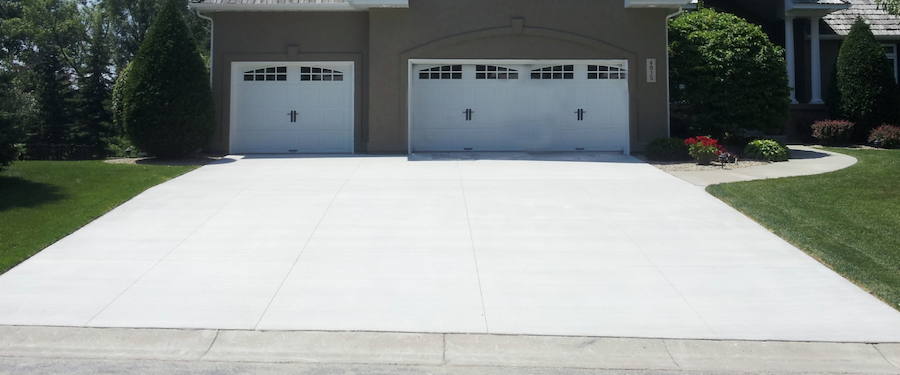When a concrete contractor pours a driveway or patio for you, you'll notice they always create straight lines through slabs of concrete. These lines are known as control joints and they play an important role in the durability of your concrete.
Before your concrete is even poured, another type of joints are created as well: expansion joints. Both expansion joints and control joints are crucial for a well-made concrete driveway in Minnesota. Keep reading to learn more about what they are, how they differ and why you need both.
Control Joints vs. Expansion Joints: How They Help, How They Differ

The general purpose of both control joints and expansion joints is to allow your concrete to crack and move in designated locations that won't compromise the overall durability of your slabs. Concrete poured without these joints can crack at random, reducing the integrity of your concrete driveway, patio or any other concrete structure.
Control joints are created within slabs of concrete after the concrete has been poured but before it has cured. Inevitably, concrete will crack as it hardens and settles but control joints allow for those cracks to occur in a straight line between slabs. Otherwise, cracks can appear anywhere along the surface of concrete, which is both visually unappealing and harmful to the long-term durability of your concrete structure.
Expansion joints are created before concrete is even poured and are filled with a pliable material, such as cork, rubber or plastic. Expansion joints are placed along the perimeters of concrete slabs, separating them from different slabs and other materials they might touch. Minnesota's extreme changes in temperature cause concrete to expand and contract; expansion joints allow for concrete to move instead of breaking when this happens.
Control joints are narrow, straight lines that are usually cut ¼ the thickness of the concrete. After concrete is poured, control joints should be placed 2-3 times in feet the thickness of the concrete in inches. This means that if your slabs are 4" thick, the control joints will be cut 1" deep into the surface and will be spaced every 8' to 12'.
Expansion joints create a complete separation between concrete slabs instead of merely giving them an opportunity to crack. Generally, expansion joints are ¼" to 1" wide but they may be bigger if needed. There needs to be an expansion joint between each slab of concrete to prevent damage from slabs colliding with one another when expanding and contracting during the freeze-thaw cycle that occurs in Minnesota's winters.
When you have a concrete patio, driveway or other structure poured, it's vital to install both expansion joints and control joints to keep your concrete from being damaged. While concrete will inevitably endure wear and tear from the elements in Minnesota over time, these joints will slow that process and keep your concrete looking great for years to come.
Minnesota's Finest Concrete Contractor
If you're looking to have a concrete driveway or any other structure poured on your property, it's important to hire a contractor who knows how to properly install control joints and expansion joints in your slabs. Contact Unlimited Concrete Concepts today for the ultimate concrete installation services in the greater Twin Cities area!